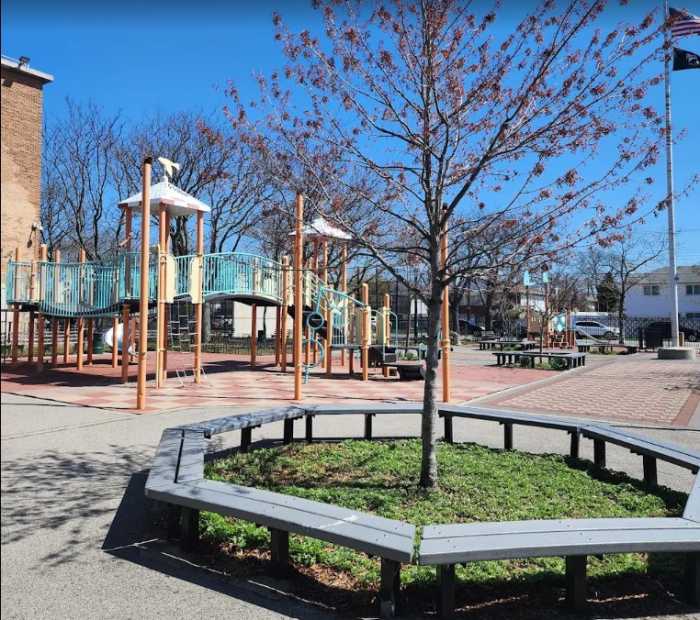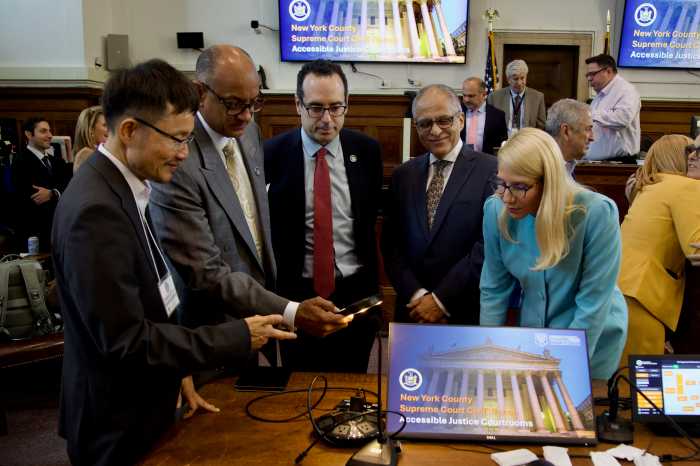By Naeisha Rose
Jamaica Hospital Medical Center in Richmond Hill held a ribbon-cutting ceremony last week for its new state-of-the-art Thomas Santucci Jr., MD Cardiovascular Interventional Suite to treat members of the surrounding community and air travelers at JFK.
The suite was named after the late chairman of the Department of Medicine at the hospital who died earlier this year. The ribbon-cutting was on July 25.
“He came here in 1968 as a cardiologist at a time when we only had two cardiologists — he was one of the two of them,” said hospital spokesman Michael Hinck. “For 30 years he was the chairman of the Department of Medicine and he passed away recently, but it was very important to him to stay on top of the latest trends in cardiac care, so we decided to name the suite after him.”
The 6,500-square-foot space, located at 8900 Van Wyck Expressway, includes two interventional labs, a six-bed recovery unit, a preparation area, and rooms for viewing, treatment and examination, according to a press release.
The purpose of the suite is to serve the local community, which the hospital estimates will produce an increase in admissions for both cardiac disease and stroke in the next five years, and to intervene in cardiovascular cases for travelers from John F. Kennedy International Airport.
“Our hospital is first in line to provide life-saving emergency services to travelers suffering a heart attack, heart failure or other life-threatening heart problems,” said the medical center said. “Each year our ambulances transport approximately 2,500 people from JFK and 10 percent of those emergency cases are the result of a cardiac issue or stroke.”
According to Dr. Zoran Lasic, the director of the Cardiac Cath Lab at the medical center, many of the patients who arrive at the hospital either already had heart issues before they were traveling or they developed thrombosis, which is a blood clot in the circulatory system, because of their inactivity while on a plane.
“Many of [the patients] have pre-existing diseases, and in addition to that there is the cabin pressure, and the duration of the flight predisposes them to risk and the other patients develop thrombosis,” said Lasic. “Imagine sitting on the airplane for five hours…and not moving.”
Travelers sitting closer to the window seat who are surrounded by other passengers on planes tend to develop heart issues the most often, according to Lasic.
Thrombosis can lead to a patient having a pulmonary embolism, which is a sudden blockage of arteries in the lung, according to Lasic.
When it comes to the southeast Queens community, the hospital estimates that cardiac disease will increase by 12 percent and stroke admissions will increase by 11 percent within five years because of many risk factors in that population that are not addressed.
Risk factors include lack of activity, obesity, smoking, high cholesterol and blood pressure, and diabetes, according to Lasic.
More than 150 patients are admitted to the hospital for acute heart attack, some of who have a type called STEMI, which means a coronary artery is completely blocked and therefore a large part of the heart muscle is unable to receive blood, according to Lasic.
The southeast Queens community is also developing Type 2 Diabetes at a younger age range, according to Lasic. Traditionally the non-hereditary form of diabetes develops in people in their 40s to 50s, but the people in the local community are developing diabetes in their 30s.
The hospital is also near capacity year-round with its 40-bed unit filled with people in stable condition who have cardiac issues and its seven-bed unit for its coronary care unit for people in need of intensive care, according to Hinck.
The new equipment allows doctors to do full body scans on patients and get precise 3D visualizations of arteries, without having to move the person, and requires less radiation to get the images, according to Lasic. This helps doctors to choose the best course of action and to operate faster.
“This enables us to perform procedures in a fast and accurate fashion to give the best results possible,” said Lasic. “We are working constantly for the best of the community.”
Reach reporter Naeisha Rose by e-mail at nrose





































